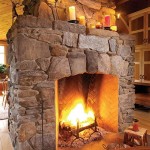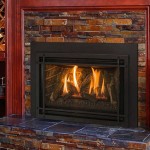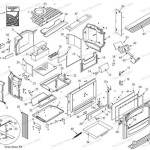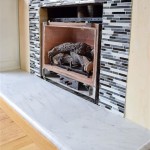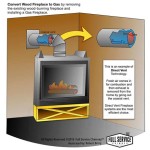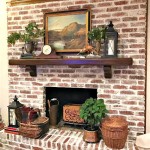How to Build an Outdoor Wood Burning Fireplace
An outdoor wood-burning fireplace can transform a backyard into a cozy and inviting space for relaxation and entertainment. The crackling fire, the warmth it provides, and the ambiance it creates offer a unique outdoor experience. Constructing such a fireplace requires careful planning, adherence to safety regulations, and a solid understanding of masonry principles. This article will outline the necessary steps and considerations involved in building an outdoor wood-burning fireplace, enabling individuals to undertake this project with confidence and competence.
Before embarking on the construction process, it is crucial to check local building codes and regulations. Many municipalities have specific requirements regarding the size, location, and materials used for outdoor fireplaces. Obtaining necessary permits and adhering to these regulations is essential to avoid potential fines or legal issues later on.
The choice of location is paramount. Consider prevailing wind direction to minimize smoke blowing into the house or neighboring properties. Ensure adequate clearance from flammable materials such as trees, fences, and overhanging structures. A level surface is ideal for the foundation, and proximity to a water source can be beneficial for cleaning and fire safety.
Planning the design is a crucial initial step. Consider the desired size and style of the fireplace. There are various design options, ranging from simple, freestanding structures to elaborate, built-in units. It's wise to create a detailed plan, including measurements of all components, before purchasing any materials.
Choosing Materials for your Outdoor Fireplace
The selection of materials influences the fireplace's longevity, safety, and aesthetic appeal. Common materials include fire brick, concrete blocks, natural stone, and mortar. Fire brick is essential for the firebox, as it can withstand high temperatures. Concrete blocks are typically used for the structural support of the fireplace. Natural stone provides a decorative finish and adds a touch of elegance. Mortar is used to bind the materials together, creating a strong and durable structure.
Fire brick is specifically designed to withstand the intense heat generated by a wood-burning fire. It is denser and more heat-resistant than regular brick. Using fire brick in the firebox ensures that the fireplace can safely contain the fire and prevents damage to the surrounding structure. Purchase a sufficient quantity to line the interior of the firebox completely.
Concrete blocks are a cost-effective and readily available material for the fireplace's structural support. They provide a solid foundation and can be easily stacked and mortared together. Choose blocks that are appropriate for outdoor use and that meet local building code requirements.
Natural stone can be used to create a visually appealing exterior for the fireplace. There are various types of stone to choose from, including fieldstone, flagstone, and river rock. Select stone that complements the surrounding landscape and that is appropriate for the desired style of the fireplace. Consider mortar color to match the stone.
Mortar is a crucial component in fireplace construction, as it binds the materials together and creates a strong, weatherproof structure. Use a type of mortar that is specifically designed for masonry applications and that is appropriate for outdoor use. Follow the manufacturer's instructions for mixing and applying the mortar.
In addition to the primary materials, consider purchasing other essential supplies, such as safety gloves, eye protection, a trowel, a level, a measuring tape, a mixing tub, and a wheelbarrow. These tools will facilitate the construction process and ensure that the fireplace is built safely and efficiently.
Building the Foundation and Firebox
The foundation is the base of the fireplace and must be strong and stable to support the weight of the structure. Begin by excavating the area for the foundation to the required depth, typically below the frost line. Pour a concrete footing to provide a solid base for the foundation. Ensure that the footing is level and that it extends beyond the footprint of the fireplace.
Once the concrete footing has cured, build a concrete block foundation on top of it. Use mortar to bind the blocks together, ensuring that each course is level. The foundation should be at least several courses high to raise the firebox off the ground and provide adequate space for ash removal.
The firebox is the heart of the fireplace, where the fire burns. It must be constructed of fire brick to withstand the high temperatures. Begin by laying a course of fire brick on top of the foundation, using fire clay mortar to bind the bricks together. Ensure that the firebox is level and that the bricks are tightly fitted together.
Continue laying courses of fire brick, using fire clay mortar to bind the bricks together. As you build the firebox, create a slight inward slope to the back wall to improve draft and reflect heat outwards. A smoke shelf can be incorporated into the back of the firebox to help prevent downdrafts.
Leave an opening at the front of the firebox for the firebox door. Consider installing a metal firebox insert to protect the fire brick and improve efficiency. These inserts usually come with a grate and an ash drawer which simplifies cleaning.
Constructing the Chimney and Finishing Touches
The chimney is essential for venting smoke and exhaust gases away from the fireplace. It must be constructed of fire brick or chimney flue tiles. Begin by building a smoke chamber above the firebox, using fire brick and fire clay mortar. The smoke chamber should taper upwards to the chimney flue.
Install chimney flue tiles inside the smoke chamber and extend them upwards to the top of the chimney. Use mortar to bind the tiles together, ensuring that they are properly aligned. The chimney should extend at least three feet above the highest point of the roof to ensure proper draft.
Once the chimney is complete, apply a decorative finish to the exterior of the fireplace. Natural stone can be mortared onto the concrete block foundation to create a visually appealing facade. Use mortar that is designed for stone veneer applications.
Consider adding a mantel to the fireplace to provide a decorative focal point. A mantel can be made of wood, stone, or concrete. Secure the mantel to the fireplace using appropriate fasteners.
Install a spark arrestor at the top of the chimney to prevent sparks and embers from escaping. A spark arrestor is a metal screen that covers the chimney opening. Be sure the screen is fire safe and rated for the temperature.
Add finishing touches, such as landscaping and outdoor furniture, to create a comfortable and inviting outdoor space around the fireplace. Consider adding firewood storage near the fireplace for convenience.
Allow the mortar to fully cure before using the fireplace. This may take several days, depending on the type of mortar used. Once the mortar has cured, start a small fire to test the draft and ensure that the fireplace is functioning properly. Gradually increase the size of the fire over time.
Regular maintenance is essential to keep the fireplace in good working condition. Clean the chimney regularly to remove soot and creosote buildup. Inspect the fireplace for cracks or damage and repair as needed.

How To Build An Outdoor Fireplace Step By Guide Buildwithroman

Diy Building An Outdoor Fireplace

How To Build An Outdoor Fireplace Step By Guide Buildwithroman

How To Make An Outdoor Wood Burning Stove Fireplace B Vintage Style

How To Plan For Building An Outdoor Fireplace

Stonetutorials Living Stone Masonry

How To Build An Outdoor Stacked Stone Fireplace

Traditional Wood Burning Outdoor Fireplace Design And Build In Fairfield

22 Cozy Diy Outdoor Fireplaces Fire Pit And Fireplace Ideas

Plans How To Build A Wood Burning Outdoor Furnace Stove

